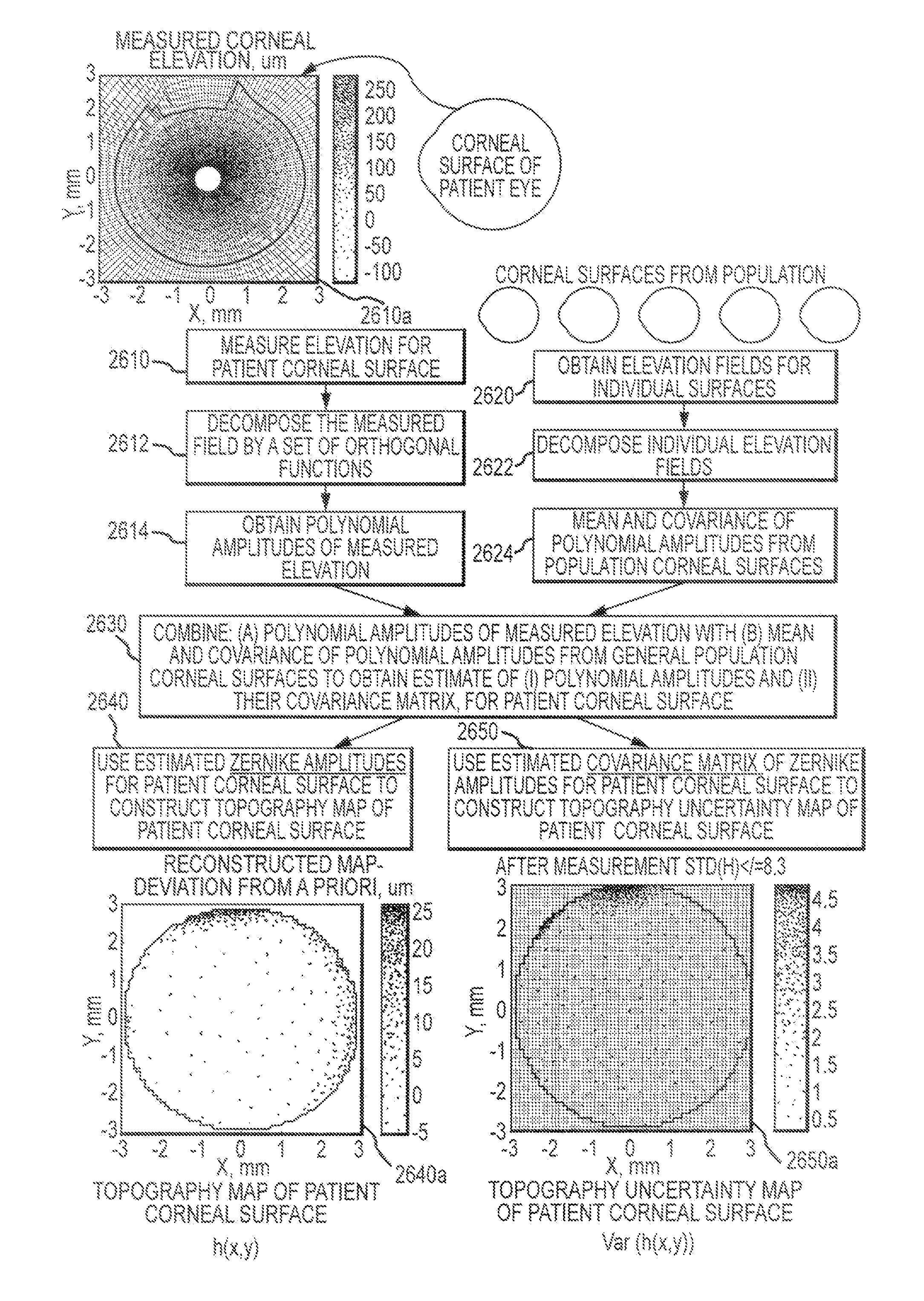System and method for ophthalmic surface based on objective quality estimation
a technology of objective quality estimation and ophthalmic surface, which is applied in the field of surface measurements of the eye, can solve the problems of noisy conventional corneal topography measurements, and other in vivo ophthalmic measurement devices often face the same problems
- Summary
- Abstract
- Description
- Claims
- Application Information
AI Technical Summary
Benefits of technology
Problems solved by technology
Method used
Image
Examples
example 1
[0128]With many topography fields measured for normal human eyes we can decompose each elevation field into Zernike series and evaluate the mean and variance of each amplitude. This will be the a priori information to input into the Kalman-Bucy filter together with the measurement data. The Kalman-Bucy filter will be applied according to the following formulas:
Ak+=Ak−+{circumflex over (K)}·{H−Ĝ·Ak−}, Mk+={circumflex over (K)}·{Î−{circumflex over (K)}Ĝ}·Mk−.
[0129]Here Ak−,Mk− and Ak+,Mk+ are the Zernike amplitudes and their covariance matrices prior and after assimilation of measurement data, respectively, H is the vector of measurement data (topography elevations), Ĝ is the operator of surface reconstruction from Zernike amplitudes (a surface defined on xi,y1 points can be computed from Zernike amplitudes and Zernike polynomials Φk(xi,yi) at these points as
Si∑kAkΦk(xi,yi))),K^=M^-1G^TF^
is the Kalman-Bucy gain, {circumflex over (F)}={ĜM−ĜT+{circumflex over (N)}}−, {circumflex over (N...
example 2
[0132]FIG. 26 illustrates aspects of a corneal surface evaluation technique according to embodiments of the present invention. Exemplary methods and systems may involve measuring or obtaining an elevation 2610a for a patient corneal surface, as indicated by step 2610. A more detailed view of a measured corneal elevation or elevation profile 2610a is depicted in FIG. 26A. According to some embodiments, such measurement data can be provided as an elevation field, defined on a set of points (xk,yk). In some cases, a topography measurement can provide a two dimensional field of corneal elevations. In some cases, a vector of the measured data or field values can be represented by H. In some instance, the measured data corresponding to the corneal elevation field of a particular patient can be noisy or incomplete. As shown here, a measurement of the corneal elevation field may present gaps, for example (e.g. near the upper central portion of FIG. 26A).
[0133]As indicated by step 2612 in FI...
PUM
 Login to View More
Login to View More Abstract
Description
Claims
Application Information
 Login to View More
Login to View More - R&D
- Intellectual Property
- Life Sciences
- Materials
- Tech Scout
- Unparalleled Data Quality
- Higher Quality Content
- 60% Fewer Hallucinations
Browse by: Latest US Patents, China's latest patents, Technical Efficacy Thesaurus, Application Domain, Technology Topic, Popular Technical Reports.
© 2025 PatSnap. All rights reserved.Legal|Privacy policy|Modern Slavery Act Transparency Statement|Sitemap|About US| Contact US: help@patsnap.com



